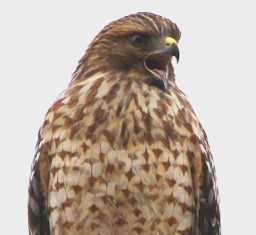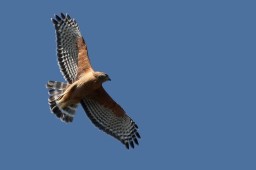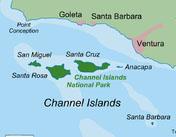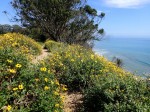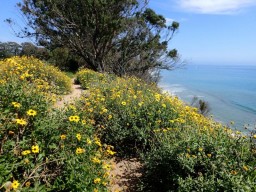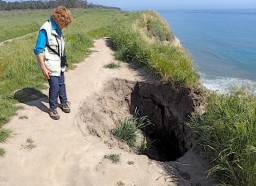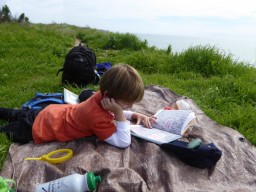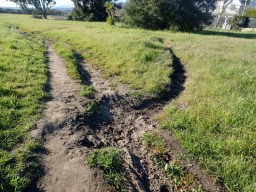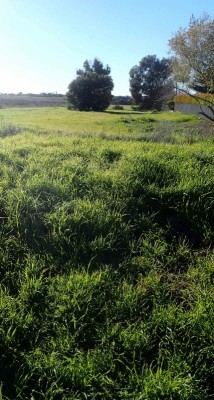Latest News About More Mesa

On August 10, Valerie Olson (MMPC Board Chair) and Linda Krop (Chief Counsel of the Environmental Defense Center and MMPC’s attorney) represented the More Mesa Preservation Coalition at a California Coastal Commission hearing in Calabasas. The hearing was in regard to the County of Santa Barbara’s Eastern Goleta Valley Community Plan. We both spoke in support of strong protections for More Mesa and its rare and sensitive coastal habitats. In general, the Commission was favorable toward our views on preservation of More Mesa, but their recommendations must now go before the County Board of Supervisors for review before the whole plan is certified. We will continue to advocate for strong policies when the County holds its next, and possibly final, hearing on the Plan.
Ask the President
Q: What does it mean when the Community Plan specifies that More Mesa must have a Specific Plan?
A: That everything is planned together … at the same time.
Santa Barbara County defines a “Specific Plan” as “A plan that provides for a more a more precise level of planning for an area than is ordinarily possible in the Comprehensive Plan or the Coastal Plan.” Potential development on More Mesa has required a Specific Plan ever since More Mesa was first protected in the Community Plan for our area … over 20 years ago. This means that whatever is being planned for More Mesa, no matter when various parts of the development will actually be built, all planning must be submitted and approved before any actual building begins. For example, you may recall a development that was being discussed about 5 years ago. This proposal included 27 “Casitas” and 12 Mansions. According to the guidelines of More Mesa’s Specific Plan, all 39 of these structures would have had to be fully planned and approved before any development could occur.
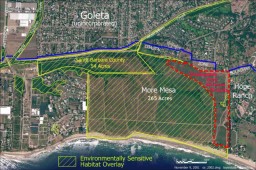
This Month on More Mesa – The Mystery of the Anise Swallowtail
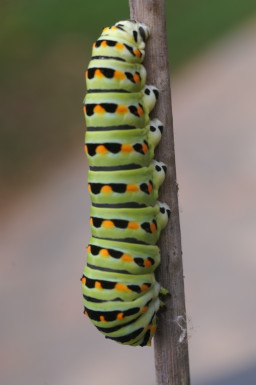
Our website has photos of all 19 species of butterflies found on More Mesa. One of these species is the Anise Swallowtail, so named because this butterfly lays its eggs on fennel, a plant that tastes like anise or licorice. Caterpillars hatch from the eggs and gorge themselves on their fennel hosts until they are big enough to become pupae. Metamorphosis occurs within the pupae, and the life cycle is completed when the butterfly emerges to begin the cycle again. It all sounds straightforward until we recognize that fennel is not native to Southern California!

Fennel was probably introduced by Italian immigrants settling in the Goleta Valley in the late 1800s; relative newcomers who used fennel extensively in their Mediterranean diets. The introduction of this non-native plant leads to some interesting musings:
- When did the Anise Swallowtails appear here? One possibility is that the species has been here for a long time and BF (before fennel) they fed on other close members of the fennel family; carrots, parsley, coriander, dill and probably wild members of the same family as well.
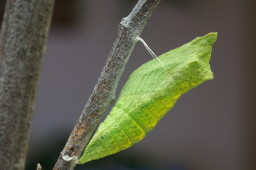
The caterpillar becomes a pupae… - If they were already here, why were they called Anise Swallowtails? The naming logic is hard to track, but it probably happened after naturalists were around to name them.
Naming aside, these are beautiful creatures and can be found in many areas of More Mesa. Take a walk, enjoy this magic place … and look for the Anise Swallowtails. They will be there … along with lots of other butterfly friends!
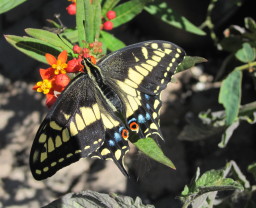
How You Can Help
Between now and the day we learn of the plans of the owners of More Mesa, we will continue to strengthen our argument for why any development should be opposed. You can help in formulating that argument in these ways:
- Send us a photograph of you and others enjoying More Mesa … demonstrating both public interest and use;
- Share a particularly interesting way in which you enjoy the Mesa;
- Help us clean up trash on More Mesa … to keep it beautiful while, at the same time showing community support;
- If you have some money left over at the end of the month send us a contribution, of any amount, to help us in defending More Mesa. You can do this on the home page of our web site or by mailing a check made out to the “More Mesa Preservation Coalition”, P.O. Box 22557, S. B., CA 93121; and,
- Encourage your friends and acquaintances whom you know enjoy the Mesa to do one or more of the above.
Thank you very much for your continued interest and support. We look forward to the day when we can purchase More Mesa and preserve for all time this rare and remarkable place … the last great place in Santa Barbara.
Be attuned to, and look for messages in the news, and from MMPC reporting on the Board of Supervisors hearing on the Goleta Community Plan.
Thanks so much!
Valerie Olson
President, MMPC



